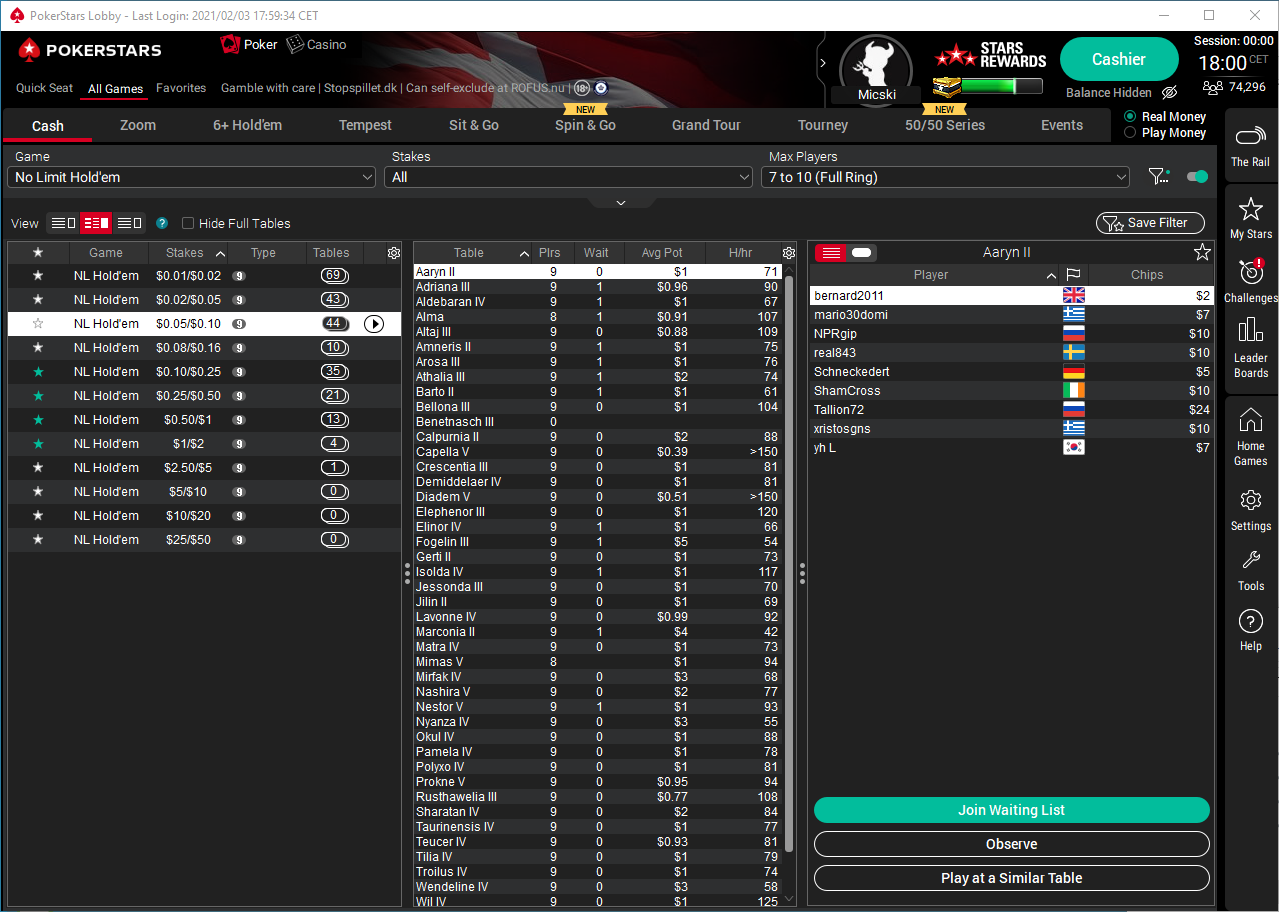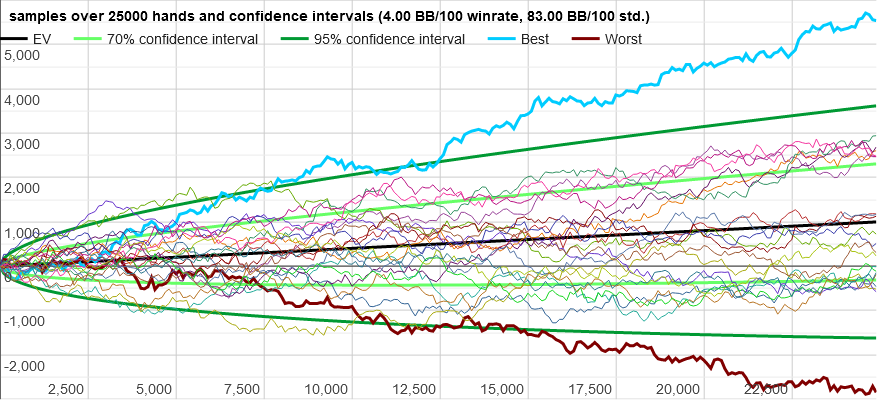This page will provide you with a solid bankroll management plan for cashgame poker with high chance of success and expected play time.
What is bankroll management in poker?
A bankroll management plan for poker is a plan for your journey through the different stakes. It is based on the size of your dedicated poker bankroll and tells you, what stakes, you can play at. It tells you, when you should move up and when you should move down and improve your skills, while you rebuild your confidence, recover from bad variance and rebuild your bankroll.

Bankroll management is not all about depositing enough money to play at a certain stake. It is also about skill. Following a bankroll management plan ensures, that you are actually able to beat the stakes, that move up from. If you can not beat NL25, then there is not much point in depositing for NL200, because you will not have the necessary skills. This is the reason, I call it a journey. As you move up through the different stakes and develops your own skills, you will notice, how the game changes and your opponents gets more skilled and operates on higher thinking levels. You can read more about levels in Poker player profiling and color coding.
Why use a bankroll management plan in poker?
The purpose of a bankroll management plan in poker is to ensure, that you will have the highest chance of success, and the lowest risk of ruin, during your journey through the different stakes.
The concept of bankroll management is hard to visualize for inexperienced poker players, because they do not understand, how card distribution and variance will affect and impact their results and bankroll in the long run. They will often lose their entire bankroll several times, when they play at too high stakes with a bankroll, that is too low, and eventually gets hit by bad card distribution and variance, which contributes to bad play, known as tilt, and further loss.

Some players might think, that experiencing a downswing over 25.000 hands or more, that follows the worst outcome as seen in the brown graph above, it close to impossible, if you are a solid 4 bb/100 player. This is simply not true. It will happen at some point. It is built into the long term game. I experienced it in early 2021 and has written about it in Variance and downswing in poker.
How to use a bankroll management plan.
A bankroll management plan depends on your player type, skills and dedication. It assumes, that you will always buy in for 100 big blinds. If you are a dedicated casual poker player, then you might go for a 25 buy-in bankroll management plan, while a semi-professional player might go for 40 buy-ins and a professional might go for 50 buy-ins or higher. This means, that you will always have at least this number of buy-ins for the stake, that you will be playing. This rule is the essence of bankroll management. Note, that a bankroll management plan for live poker can be set lower, because of the higher win rate and lower risk.
The following tables will assume a 25 buy-in bankroll management plan. They are based on the stakes at PokerStars and USD currency. The size of your bankroll for each stake are shown in the From and To columns. The expected win rate for each stake is 4 big blinds per 100 hands and is used to determine the amount of hands, you can expect to play through each stake. This amount of hands is used to estimate the amount of playing days, it can take, if you play at 4 tables for 6 hours per day.
Bankroll management plan for micro stakes poker.
| Stake | From | To | Hands | Days |
| NL2 | 50 | 125 | 93.750 | 52 |
| NL5 | 125 | 250 | 62.500 | 35 |
| NL10 | 250 | 625 | 93.750 | 52 |
| NL25 | 625 | 1.250 | 62.500 | 35 |
Bankroll management plan for small stakes poker.
| Stake | From | To | Hands | Days |
| NL50 | 1.250 | 2.500 | 62.500 | 35 |
| NL100 | 2.500 | 5.000 | 62.500 | 35 |
Bankroll management plan for mid stakes poker.
| Stake | From | To | Hands | Days |
| NL200 | 5.000 | 12.500 | 93.750 | 52 |
| NL500 | 12.500 | 25.000 | 62.500 | 35 |
Bankroll management plan for high stakes poker.
| Stake | From | To | Hands | Days |
| NL1K | 22.300 | 47.300 | 62.500 | 35 |
| NL2K | 47.300 | 97.300 | 93.750 | 52 |
| NL5K | 94.300 | 222.300 | 62.500 | 35 |
Shot taking in poker.
There are times, when it makes sense to deviate from a strict bankroll management plan. If you have a comfortable amount of buy-ins for your current stakes and you are playing a solid game, while the higher stakes seems good, then you can consider taking a buy-in or two for it. This will prepare you for the more advanced strategies and larger amount of money in play. You might also boost your bankroll significantly. That is called shot taking.
More about bankroll management.
You can make your own plan by changing the amount of buy-ins, that you feel are the best for your journey. If you want to increase your risk of ruin with more aggressive shot-taking, you can reduce the amount of buy-ins, needed for each or some stakes.
You might want to learn more about bankroll management in Variance and downswing in poker and How to build a profitable game plan for cashgame poker.
